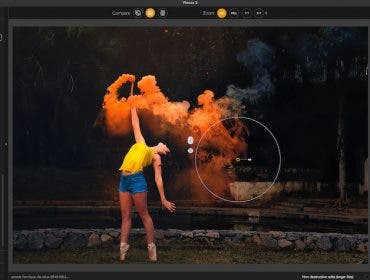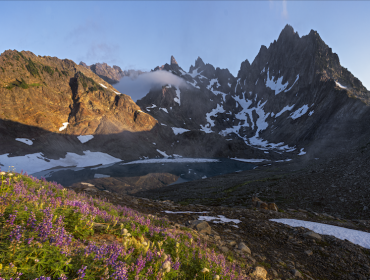Being stuck in the house doesn’t mean you should take a break from macro photography. It only means you should get more creative than usual and come up with new ideas for indoor macro photography. Limitations are great opportunities to master new technical skills, experiment, and become a better photographer. Moreover, having fewer interesting subject matter forces you to be more patient and observe the environment with an open attitude.
Finding a subject isn’t the only challenge of indoor macro photography. You have to work almost exclusively with artificial light. Master the art of macro photography lighting and learn how direction, intensity, and color of the light influence your composition. At the same time, it’s more likely that you’ll have static subjects, which allow you to take your time and perfect each shot. Place the camera on a tripod and experiment with different shooting angles, light design, and framing. It’s time to be adventurous and try the craziest ideas. Check out the following subjects and ideas to get you started.
Houseplants
A nature lover like yourself probably has a few houseplants. They are the perfect subjects to maintain your connection with the outdoor environment and improve your macro photography skills. Whether you focus on green plants or flowers, you’ll find a corresponding houseplant for sure. Furthermore, there will be no hazard to ruin your photographs like an unexpected wind. Instead, you’ll take photos in a controlled environment and decide where each item should be in your composition.
Place the houseplants near a window to benefit from as much natural light as possible. Install the camera on a tripod and take the same photograph at different times of the day or at different blooming phases of the plant. For example, you can start your photo series with a seed, plant it and photograph the emerging seedling, and come back to it every day and document its development. Being indoors allows you to create a series of photos and document the life of your subject.

Fruits and Vegetables
Fruits and vegetables are another popular and easy-to-find subject for indoor macro photography. They provide a wide range of colors, textures, and shapes. You can choose to focus on a specific feature or fill the frame with a pattern. You can arrange the items as you wish. For example, you can put together objects with contrasting colors or textures. Like with plants, you can follow their life cycles and show more than a tasty fruit.

However, fruits and vegetables are highly used subjects. Unless you don’t come up with something original and fresh, your photographs will get lost in the large volume of macro pictures featuring food. You can also try to go beyond the visual aspect of an item and add a sense of its taste and smell. Some fruits and vegetables also have a conceptual meaning: for example, they remind you of a holiday or season. Consider how you can show that in your shots.
Water Droplets and Ice
Because you take photos in a controlled environment, you can experiment with more complicated techniques such as photographing water droplets and ice. For example, spray some water on a clean surface and try to frame a single drop. Alternatively, you can capture water dripping into another liquid such as milk, coffee, or oil. If you use liquids with different viscosities and colors, you can create abstract artworks.
There are endless ways you can play with water. For example, you can photograph an item through a wet transparent surface and recreate the effect of rain. Soft colors and blurred subjects will create painting-like photographs. Or you can photograph ice cubes, frozen berries, or vapors coming from your hot drink. Water has many forms, and all of them are good subjects for macro photography.

Jewelry
Not all your subjects should be natural elements. You can also focus on small items such as jewelry and technology. Clock mechanisms and crystals work as well. Explore the art of still-life photography and broaden your horizon. Everything you learn now will help you create better outdoor compositions, perfect your technical skills, and improvise with ease.
For example, jewelry looks a lot like flowers. They come in various designs and materials (i.e., metal, glass, wood, rock, bone). Find a background that enhances their colors and geometry. Get very close to create a shallow depth of field and blur the background. Focus on storytelling, creating an atmosphere, and capturing feelings rather than objects.

Paint
There is a lot you can make with watercolors or oil paints. Mix colors and viscosities and create abstract artworks that will look amazing in any exhibition. The paint teaches you how to deconstruct a scene into raw elements. It also teaches you how to work with colors, observe how they interact with light, and bring to the surface your inner artist. Forget about rules and framing. Fill the frame with brush strokes, dripping paints, splashes, or a dry palette of color powder.

Liquid paint isn’t the only way to experiment with colors. You can also use food colorants, makeup, chalk, or glitter.
Textiles
If you want texture and patterns, then fabric is the best material for you. Macro photography allows you to transform a piece of cloth into an interlaced web of threads. They may be silky and elegant, rough and scary, used and sad, and more. There is always a story behind a piece of fabric.
Working with raw materials helps you conceptualize your work and invest more in storytelling. How do you create a strong focal point with just fabric as your subject? How can you use the lines of textile to lead the viewer’s eye and convey a message? Macro photography supports you in revealing the unseen face of natural and human-made items.

Souvenirs and Toys
Macro photography has a way of making tiny objects look larger than life. Put your favorite toy or souvenir on display by taking photos using a macro lens. Play with dimensions to make the objects appear human size, or have multiple toys interact with each other to create a surreal-looking photo.

Animated Subjects
Speaking about capturing the unseen part of the world, how about turning your lens to your partner, friends, or pets? Close-ups of the human iris are some of the most beautiful macro photos you can find. Hair or skin and its imperfections are good choices too. They are also technically challenging because animated subjects aren’t as patient as inanimate ones. Moreover, flash isn’t always an option in this case.

In your search for new ideas for indoor macro photography, you have a lot of space for creativity. Look from the whiskers and fur of your pets, to funny face expressions, age signs, attitudes, and personalities. All these little unnoticed details are unique features for your macro photographs.
Concluding words
Indoor macro photography is usually a combination of still-life and macro photography. You work in a controlled environment, with artificial light sources and stable conditions. You can have the light you want, whenever you want it. Moreover, you can recreate a scene or install your camera and maintain its position for days, weeks, or months. As a result, you can create unique compositions, experiment with multiple materials, and try all you can imagine.
However, remember the purpose of macro photography. Tell the stories of those tiny objects or beings overseen or forgotten most of the time. Take time to observe, connect, and find their best features. Then, photograph them in such a way that the viewer will be curious to find out more.






